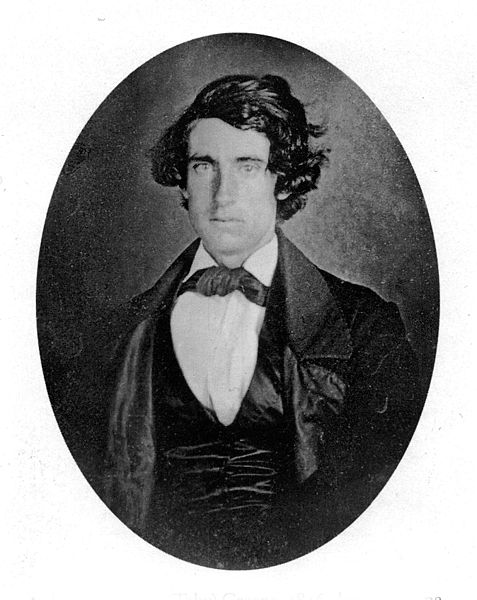The Confidence-Man: His Masquerade, first published in New York on April Fool's Day 1857, is the ninth book and final novel by American writer Herman Melville. The book was published on the exact day of the novel's setting.
First edition title page
Manuscript fragment from Chapter 14 of The Confidence-Man.
Herman Melville was an American novelist, short story writer, and poet of the American Renaissance period. Among his best-known works are Moby-Dick (1851); Typee (1846), a romanticized account of his experiences in Polynesia; and Billy Budd, Sailor, a posthumously published novella. At the time of his death, Melville was no longer well known to the public, but the 1919 centennial of his birth was the starting point of a Melville revival. Moby-Dick eventually would be considered one of the great American novels.
Melville depicted in an 1870 portrait by Joseph Oriel Eaton
An 1810 portrait of Melville's father, Allan Melvill (1782–1832), by John Rubens Smith, now housed at the Metropolitan Museum of Art in New York City. In Melville's novel Pierre (1852), he fictionalized this portrait as the portrait of Pierre's father.
A c. 1815 portrait of Melville's mother Maria Gansevoort Melville by Ezra Ames, now on display at the National Gallery of Art
Richard Tobias Greene, who jumped ship with Melville in the Marquesas Islands and is Toby in Typee, pictured in 1846






